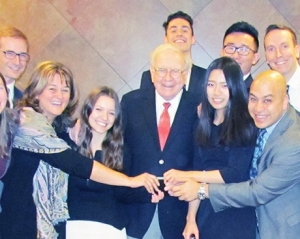Today, more and more of the world’s most affluent are joining this call to action, but you don’t have to be a Buffett or a Gates to create a lasting impact.
Incorporating a philanthropic review into your yearly planning is the first place to start. Assess your cash flow and make sure — before anything else — you pay yourself first. Consider donating some or all of your tax savings as a result.
If you can project this to be applicable over the next five years, then you are in a position to pledge more substantial support than you might have imagined.
By the time your children reach the age of adulthood, you are likely to review your estate plan to reflect this new reality. It’s amazing how few people have estimated their estate’s tax liability. This should be clarified and taken into account when making a decision as to whether or not to leave a legacy to charity.
The amount of taxes or “social capital” cannot be passed on to adult children. Do you think they would be willing to forfeit some of their inheritance to put that social capital to good use towards your favourite charity? This is not an all-or-nothing proposition. Speak to your professional advisors about a plan.
Suppose you are already established in retirement, have begun registered retirement income fund (RRIF) withdrawals, and experience a clawback on some or all of your old age security. This could be the time to begin an endowment. That way, you’ll be able to see the fruits of your generosity today.
I am often asked how to get the most out of giving. Here are three tips I recommend.
1. Think of your favourite charity as another child. You’ll find it’s a deeply gratifying way to invest in something greater.
2. Enjoy the fruits of your generosity. Take part in the benefits that come from your investments, whether it be attending events or sharing your skill set.
3. Know how much is enough and how much is too much. Giving shouldn’t be a task; know what you are able to give without having it become a burden to you and yours.
With a new year ahead, make your own pledge to find bold ways to give back. A planned gift empowers you to make a more significant contribution than you may think. In its design, make sure to profit from financial and tax benefits that help you fulfill your philanthropic goals.
To learn more, talk to your financial planner or contact me.
#CUgiving
Related links
 Renowned investor and philanthropist Warren Buffett, pictured with Concordia students during their November visit at his offices in Omaha, Nebraska.
Renowned investor and philanthropist Warren Buffett, pictured with Concordia students during their November visit at his offices in Omaha, Nebraska.
 Silvia Ugolini
Silvia Ugolini